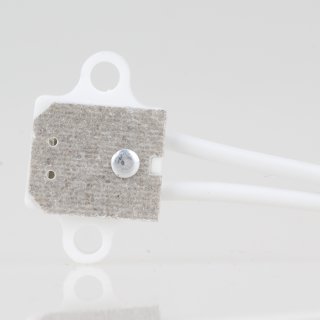Halogen Fassung
The first halogen to be isolated and recognized as an element was chlorine. Astatine has found uses in medicine even though it is radioactive and decays quickly. Bromine liquid evaporates easily at room temperatures emitting an orange vapor. Bromine has a very strong and bad odor. It gets its name from the Greek word 'bromos' which means 'stench.' 90-Watt PAR38 Halogen Indoor/Outdoor Flood Light Bulb (2-Pack) Philips EcoVantage 70-Watt long life PAR38 Philips EcoVantage 70-Watt long life PAR38 indoor/outdoor flood light bulb is ideal for use in living rooms, offices, kitchens, as well as your outdoor security fixtures. Philips EcoVantage bulbs are a bright, energy saving alternative to standard incandescent light bulbs.
Today many light bulbs and luminaires are available with halogen and LED technology. Is it worth buying the more expensive LED version? Are there any advantages? Here you can find out the differences between halogen and LED lighting technology.
Contents
- LED replacement for halogen: High voltage or low voltage
LED or halogen?

Halogen lights have been the preferred light source as a replacement for incandescent lamps for a long time. The main advantage of halogen lamps was their increased efficiency. A halogen lamp consumes around 20% less energy than an incandescent lamp within the same brightness. The lifespan of a halogen lamp vs. incandescent lamp has also doubled.
However, if today’s LED technology is used as a benchmark, halogen lamps have almost nothing but disadvantages. LED lights are even more economical with around 85% less power consumption than halogen lamps. LED lights also have a clear advantage in terms of durability. They will last between 15,000 – 50,000 hours.
Many luminaires are available in two versions. One with halogen lamps and one with LED lamps. Nevertheless, consumers often choose the outdated halogen version. The main reason for this is the difference in price. But if you think of the energy savings and the long lifespan, in most cases the LED variant is ultimately cheaper.
Comparison between LED and halogen lights
The energy savings and much longer lifespan of LED’s compared to halogen lamps have been described above. As a positive side effect of the low energy consumption, most LED lamps only get hand-hot. There is no risk of burns as with halogen lamps.
Halogen lamps have a filament which generates the visible light in addition to the waste heat. The filament is very sensitive to shocks when switched on. LED lamps, on the other hand, are based on semiconductor technology and are shockproof and insensitive to vibrations. This is a particular advantage for adjustable or movable lights.
The brightness of halogen lamps can be easily adjusted with a dimmer. Many LED lamps are not dimmable. With dimmable LED lamps, this feature must be explicitly stated in the product description.
| Comparison | Halogen | LED |
|---|---|---|
| Savings compared to incandescent lamp | 20% | 80 – 90% |
| Lifespan | 2,000 – 4,000 h | 15,000 – 50,000 h |
| High heat loss | yes | no |
| Shockproof | no | yes |
| Dimmable | yes | if specified |

LED replacement for halogen: High voltage or low voltage
There is a large variety of LED light sources for all existing sockets. In principle, all halogen lamps can therefore be replaced by LED’s. But you must take care with the voltage used, as there are high-voltage and low-voltage halogen lamps. The LED replacement must be appropriate for the same voltage as the halogen lamp to be replaced.
LED replacement for high-voltage halogen lights
High-voltage halogen lights are operated directly with a mains voltage of 110V. Here the switch to a 110V LED bulb is usually unproblematic. However, problems can occur if the lamps are connected to a dimmer.
There are different dimmer systems and especially many older models only work correctly with incandescent or halogen lamps. If the dimmer is not specified for LED lights, this usually shows up by flickering light or they remain completely dark. Then only the exchange of the dimmer with an appropriate LED version will help.
LED replacement for low voltage halogen
Low-voltage halogen lamps are operated with voltage of 12V. This voltage is generated by a transformer from the mains. If there are problems after switching to 12V LED lamps it could depend on the used transformer.
Some transformers need a minimum load, which is not reached by the economical design of LED lights. In this case the connected lamps will flicker or stay off completely. Then only replacing the transformer with an appropriate LED power supply will help.
LED replacement for halogen: Brightness and color temperature

In addition to an identical operating voltage, the replacement of halogen lamps with LED lamps also depends on other facts. Usually you want to have a similar brightness as before after replacing the lamps. The brightness of LED lamps is not given in watts, but in lumens.
Our watts to lumens converter helps you to find out the lumen value of the old halogen lamps. Also the beam angle of the old and new lamps should be similar.
Halogen lamps produce a very warm cosy light. LED lamps, on the other hand, are available with all color temperatures for a wide variety of applications. In order to obtain the same light quality as possible with LED lamps, these should have a color temperature of 2700 Kelvin.
Conclusion
Halogen Fassung G9
No matter if you want to buy a new lamp or replace the illuminants of existing lamps, LED instead of halogen is the better solution in most cases. The energy cost savings and long life of LED compared to halogen lamps are only two of many advantages.
Halogen Fassung G4
The purchase price of LED lamps is only higher at first glance. In the long run, the use of modern LED technology pays off itself.